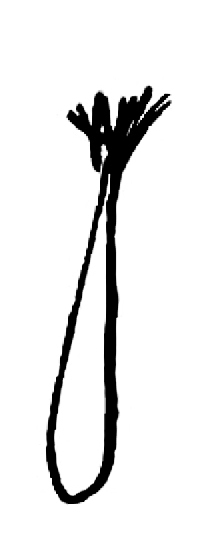From William Henry Harvey 19 May 1864
Trin. Coll | Dublin
19 May 1864
Dear Darwin
When I was out with my class1, on Saturday last, I noticed, on sandy, dry ground near the sea, a space covered by many dwarfed plants of the common Dandelion—& among them one plant to which I was attracted by the colour of its flowers. The ligules, instead of being of the common yellow, were of a deep fulvous or brownish-orange. On examining it closer I found that the achenes, in all the many flower heads which the plant bore, had changed their form “generically”—as it would be considered by any dealer in Compositæ. I send you some heads2, where you will find

|
for |

|
!!— |
Now what is this?— Is this solitary plant the sole survivor, as it ought to be by theory, of an innumerable number of infinitessimal alterations for the better, in the Achene—: or is it a sudden jump—from one sort of achene to another?
I vote for the latter opinion—seeing it is a single individual, out of hundreds observed—(we did not find another like it, though we looked all about)
But what then?— Of course, being in Ireland, it can only be a sport of a Dandelion—but if it came from S. Africa, it would be a genus.— I know several Cape Composites which can only be distinguished even specifically, by their achenes—yet these are so different, that they are placed in different genera.3
Do these generic differences occur by sudden jumps; and specific by gradual fluxions; or what?— I have always been against tying Nature down to any one mode of producing changes.4
I shall be glad to hear what you think5—& I do most sincerely hope that your health has improved
Yours very truly | W. H. Harvey
I have transferred the root, for culture, to our Botanic Garden.6 W H H
CD annotations
Please cite as “DCP-LETT-4503,” in Ɛpsilon: The Charles Darwin Collection accessed on